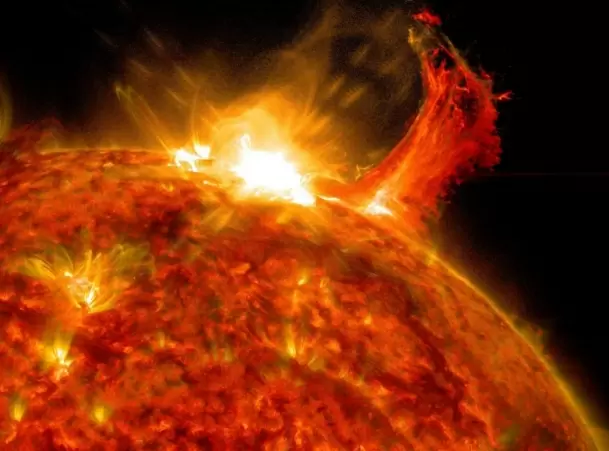New AI tool to forecast a solar storm 30 minutes before
New Delhi
31-March-2023

Photo : IANS
In the wake of increasing solar storms, a team of international researchers including from India have partnered with the NASA to develop a new computer model that combines artificial intelligence (AI) and satellite data to sound alarm for dangerous space weather.
The impacts of these magnetic storms can range from mild to extreme, but in a world increasingly dependent on technology, their effects are growing ever more disruptive.
The new model uses AI to analyse spacecraft measurements of the solar wind (an unrelenting stream of material from the Sun) and predict where an impending solar storm will strike, anywhere on Earth, with 30 minutes of advance warning.
This could provide just enough time to prepare for these storms and prevent severe impacts on power grids and other critical infrastructure.
"With this AI, it is now possible to make rapid and accurate global predictions and inform decisions in the event of a solar storm, thereby minimising -- or even preventing -- devastation to modern society," said Vishal Upendran of the Inter-University Centre for Astronomy and Astrophysics (IUCAA) in India.
The team of researchers at the Frontier Development Lab -- a public-private partnership that includes NASA, the US Geological Survey, the US Department of Energy, and the IUCAA -- applied an AI method "deep learning" and developed a computer model called DAGGER (formally, Deep Learning Geomagnetic Perturbation).
Watch This TWL Video
DAGGER, detailed in the journal Space Weather, can quickly and accurately predict geomagnetic disturbances worldwide, 30 minutes before they occur. It can produce predictions in less than a second, and the predictions update every minute.
With models like DAGGER, there could one day be solar storm sirens that sound an alarm in power stations and satellite control centres around the world, the researchers said.
The DAGGER team tested the model against two geomagnetic storms that happened in August 2011 and March 2015. In each case, DAGGER was able to quickly and accurately forecast the storm's impacts around the world.
DAGGER is the first one to combine the swift analysis of AI with real measurements from space and across Earth to generate frequently updated predictions that are both prompt and precise for sites worldwide.
The computer code in the DAGGER model is open source, and according to Upendran, it could be adopted, with help, by power grid operators, satellite controllers, telecommunications companies, and others to apply the predictions for their specific needs.
Such warnings could give them time to take action to protect their assets and infrastructure from an impending solar storm, such as temporarily taking sensitive systems offline or moving satellites to different orbits to minimise damage. - IANS
More Headlines
PM Narendra Modi Makes Podcast Debut with Nikhil Kamath on 'People By WTF'
Laundry Startup Revivo Secures Pre-Seed Funding For Expansion
Bajrang Dal Appeals to Ban Oyo Check-Ins for Unmarried Couples in Bengaluru
Heavy Rains Predicted In Five TN Districts On January 11
Cold Wave Grips Rajasthan: Fatehpur Hits 1.1°C, Nagaur 1.7°C
PM Narendra Modi Makes Podcast Debut with Nikhil Kamath on 'People By WTF'
Laundry Startup Revivo Secures Pre-Seed Funding For Expansion
Bajrang Dal Appeals to Ban Oyo Check-Ins for Unmarried Couples in Bengaluru
Heavy Rains Predicted In Five TN Districts On January 11
Cold Wave Grips Rajasthan: Fatehpur Hits 1.1°C, Nagaur 1.7°C










